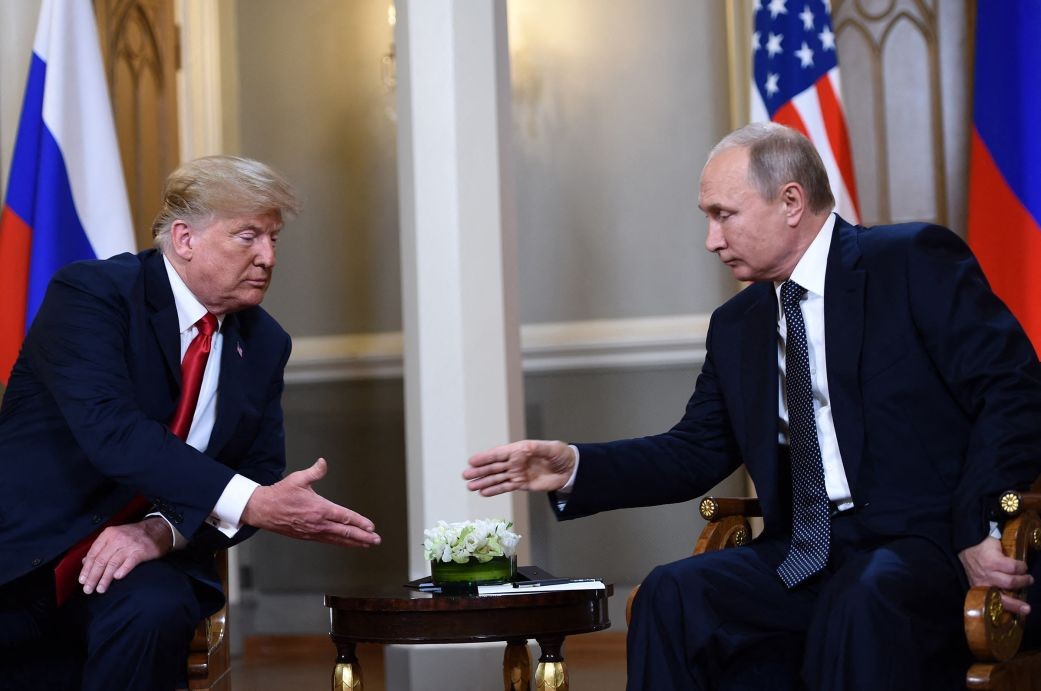
By Anindita Mahapatra*
Published on Aug. 25, 2025
The international political area has been transformed into an elaborate stage performance for the past three months. And this performance has starred only one dominant actor: Donald J. Trump. In quick succession, the U.S. President has claimed credit for ceasefires, threatened and suspended, and resumed tariffs, berated allies, welcomed rivals, and even promoted himself as a Nobel Peace Prize candidate. The tornado of announcements, tweets, videos and photo opportunities has left observers asking whether Trump is advancing U.S. interests or simply staging a large-scale public-relations campaign for himself.
The Mediation Mirage
In May, Trump announced that the United States had successfully mediated a ceasefire between India and Pakistan. This self-asserted claim was swiftly dismissed by India. Foreign Secretary Vikram Misri, India’s most senior diplomat, clarified that the ceasefire was a bilateral arrangement negotiated directly between the Director Generals of Military Operations of both countries, with no third-party involvement. The Prime Minister emphasized India’s long-standing policy of rejecting external mediation on its disputes with Pakistan. The implausibility of Trump’s claim, in contrast with India’s firm denial, was widely reported by esteemed and trustworthy Indian and international media channels, highlighting Donald Trump’s tendency of inserting himself in sensitive conflicts. This episode was far from the end of the elaborate PR performance. The subsequent months witnessed Trump’s repeated citation of his role in stopping wars across the globe. Through implications and direct assertions, he brandished an unreliable tally as evidence of his supposed peacemaking record. The reliability of the tally can be easily contested due to the simple event of Trump claiming he settled six wars, when in conversation with the Ukrainian President, and claiming the number had gone up to seven, the very next day in an interview, with no mention of the seventh alleged war that he had solved. Interestingly, the headline of a story in The New York Times is: “Trump Says He’s Ended 6 (or 7) Wars.” He further asserted that such achievements were worthy of recognition by the Nobel Peace Prize committee. However, fact-checking organizations highlighted that many of these ceasefires were either temporary and disputed, or under progress with U.S. involvement being peripheral at best. The India-Pakistan example served as a prominent case where Trump’s narrative diverged sharply from reality.
Tariff Theater
In the midst of his loud proclamations of being an international peacemaker, Trump reignited economic hostilities through his trade policy. The initially announced 90-day pause on new tariffs was revoked, and resumed on August 7, with a gravely uneven approach. The United States granted a 3-month extension of its tariff truce to China, its own primary rival in global trade, while shoving other nations with reciprocal tariffs, signalling that Trump’s trade wars were far from over. Trump has seemingly particularly targeted India by not only imposing additional tariffs on Indian goods but also accompanying the move with a rude remark online. In a widely reported post, he declared that “India and Russia can take their dead economies down together.” International media outlets labelled this statement as both inflammatory and counterproductive, especially due to the need for Washington D.C. and New Delhi’s partnership to counterbalance China. This entire pattern shows dramatic, and even erratic choreography of actions from Trump which may confuse the markets but proves highly effective in keeping Trump’s name in global headlines.
The Alaska Spectacle
The most telling case for this entire phenomenon to be more of a PR stunt than intelligent strategic diplomacy is Trump’s recent meeting with Russian President Vladimir Putin. On August 15, Putin flew to Alaska for a summit hosted by the U.S. Broadcasts surrounding the meeting were heavily dominated by images of handshakes, military flyovers, and tightly managed press moments. Yet no concrete agreements or solutions surfaced. The Nobel Push Interwoven with these events was a sturdy nudge towards the Nobel Peace Prize. Trump’s offhand suggestion soon escalated into an official talking point. On July 31, White House press secretary Karoline Leavitt told reporters it was “well past time” for Trump to be recognized with the award. It was further claimed that President Trump had brokered an average of about “one peace deal or ceasefire per month during his six months in office”. The remark was picked up globally, with supportive coverage amplifying the claim and editorials deriding it as absurd. The juxtaposition of a press secretary formally promoting her boss for the world’s most prestigious peace prize, especially as tariff battles reignited and summits yielded little, deepens the impression of a campaign more focused on branding than diplomacy.
Diplomacy or Branding?
Trump’s international politics reveal a consistent pattern: bold announcements, provocative language, self-crediting of disputed outcomes, and headline dominating performances that often lack substantive follow-through. Each episode, whether contested ceasefire claims, tariff wars, or summits without results, functions as a part of a larger campaign that keeps Trump at the center of global political discourse. As Trump continues to oscillate between claims of peace-making and economic confrontation, the world is left to ask: are these the moves of a statesman’s diplomacy, or a global public-relations campaign? For now, the answer may depend less on outcomes, and more on Donald Trump’s most natural skill, optics.
*Anindita Mahapatra currently works in the research team of Kalinga Institute of Indo-Pacific Studies
The commentary originally appeared in The Daily Guardian Aug 23rd issue.